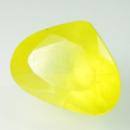|
|
||||||||||||||||
|
||||||||||||||||
|
||||||
|
|
|
|
Sulfur
(Sulphur) |
|
| | |
| Discovery: prehistoric; IMA status: Valid (pre-IMA; Grandfathered) | ||
|
| ||
|
Chemistry |
|
|
| |
|
S8 or S | |
|
|
Elemental Sulfur |
|
Molecular Weight: |
256.53 gm |
|
Composition: |
Sulfur |
100.00 % |
S |
|
|
|
|
|
100.00 % |
|
|
|
|
|
|
||||
|
Classification |
|
|
| |
|
Elements | |
|
1/B.03-10 | |
|
|
1 : ELEMENTS (Metals and intermetallic alloys; metalloids and nonmetals; carbides, silicides, nitrides, phosphides)
|
|
Related to: |
Sulfur Group. Polymorph of Rosickýite, Sulphur-β |
|
Members of Group: |
Sulfur Group: Rosickýite, Sulfur, Sulfur-β |
|
Varieties: |
Selenian Sulfur |
|
Synonyms: |
α-Sulfur, α-Sulphur, Alpha-Sulfur, Alpha-Sulphur, Brimstone, ICSD 63082, Native S, Native Sulfur, Native Sulphur, PDF 8-247, Schwefel, Soufre, Sulfur-alpha, Sulfur-α, Sulphur-alpha |
|
|
|
|
Crystal Data |
|
|
|
|
|
Crystals dipyramidal on {111}, thick tabular and disphenoidal, to 20 cm; also massive, reniform, and forming stalactites; as a powder. |
|
|
On {101}, {011}, {1l0}, rare |
|
|
|
|
|
Physical Properties |
|
|
|
|
|
Imperfect on {001}, {110} and {111}. Parting on {111}. |
|
|
Irregular/uneven, conchoidal. Also can be somewhat sectile. |
|
|
Rather brittle to somewhat sectile |
|
|
1.5 - 2.5 |
|
|
2.07 (g/cm3) |
|
|
None |
|
|
Not Radioactive |
|
|
Other: |
Thermal Behaviour: with a low melting point of 113 degrees C, Sulfur burns readily in air, with a low blue flame, and gives off choking fumes of Sulfur-dioxide - acrid odor (forms sulfurous and eventually sulfuric acid in air). |
|
|
|
|
Optical Properties |
|
|
|
|
|
Sulfur-yellow to honey-yellow, yellowish brown, greenish, reddish or yellowish gray; may be black from included organic matter. |
|
|
Transparent, translucent |
|
|
Resinous, greasy |
|
|
1.708 - 1.773 Biaxial ( + ) |
|
|
0.287 |
|
|
Relatively weak; r < v |
|
|
Visible to distinct |
|
|
|
|
|
Occurances |
|
|
|
|
|
Geological Setting: |
A sublimation product at volcanic fumaroles; a product of the activity of biological micro-organisms; as a result of low oxidation potential and highly acidic chemical reactions in mineral deposits; formed by the decomposition of sulfides, especially pyrite, during mine fires; found in sedimentary rocks. |
|
Common Associations: |
Gypsum, Anhydrite, Halite, Aragonite, Calcite, Celestine |
|
Common Impurities: |
Se, Te |
|
Type Locality: |
None (prehistoric) |
|
Year Discovered: |
Prehistoric |
|
View mineral photos: | |
|
|
|
|
More Information |
|
|
|
|
|
| |
|
|
|
|
Sulfur and Diamond are the only native elements that are usually available as faceted gems. Faceted Diamonds are common but facted Sulfur gems are somewhat rare because Sulfur is difficult to cut due to its very low Moh's hardness of 1.5 - 2.5 and its high heat sensitivity. Sulfur is very brittle because of its poor heat conductivity. A cool Sulfur gem can actually crack if it is held in a warm hand. Sulfur is a common mineral but faceted gems are fairly rare. Sulfur also has a bad reputation for having a strong odor. The Sulfur itself does not have an odor. This odor only occurs when Sulfur is exposed to water, water vapor or even humidity in the air. When this occurs, hydrogen sulfide (H2S) gas is produced which produces the strong odor. It is a powerfull odor which smells like rotten eggs. However, if Sulfur mineral specimens and gems are kept dry they will not emit the odor. The name Sulfur is historically a Latin word. The original Latin spelling was sulpur, the later Greek spelling was sulphur. The sulfur spelling appeared toward the end of the Classical period (about AD 600). Sulphur has been the standard spelling in Britain since the 19th century while Sulfur has been the spelling in the USA and Canada has used both spellings. However, the International Union of Pure and Applied Chemistry (IUPAC) adopted the sulfur spelling in 1990. The Nomenclature Committee of the Royal Society of Chemistry restored the sulfur spelling to Britain in 1992. Sulfur is available from many sources worldwide although fine crystal specimens are somewhat rare. Notable occurances include Michigan and Ohio in the USA; Bolivia; Chile; Poland; and Sicily, Italy. Sulfur
distribution: in the USA, large deposits occur
in salt domes, as in Louisiana, especially in the area
of Lake Charles, Chalcasieu Parish, and in Texas near
Freeport, Brazoria County. At Sulfur Mountain, in Yellowstone
Park, Wyoming. In California, at the Sulfur Bank mercury
mine, on Clear Creek, Lake County. Crystals from quarries
at Maybee and Scofield, Monroe County, Michigan. On
Sicily, at Cianciana, Agrigento, and Racalmuto, the
source of exceptionally large and fine crystals; from
many other places in Italy, notably at Solfatara di
Pozzuoli, near Naples; at Perticara, near Rimini, Marche;
and at Carrara, Tuscany. Large crystals from Spain,
at Conil, near Cádiz, Cádiz Province.
In Baja California, Mexico, at San Felipe. Numerous
other localities are known, the occurrence often inconspicuous.
|
|
|
We
have not photographed our Sulfur
gems yet. Please
check back soon. |
